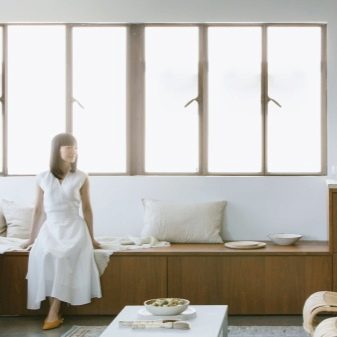KonMari cleaning
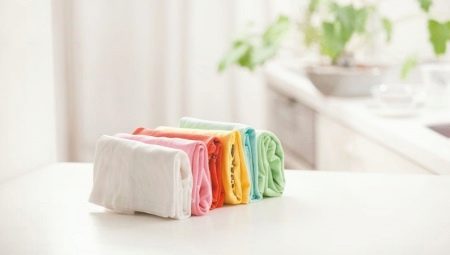
Marie Kondo is considered one of the main tidying specialists. Its cleaning system is popular all over the world. After all, if used correctly, any house can be put in order in just a few hours.


Folding clothes and shoes
Cleaning according to the KonMari method should be carried out in several stages. One category of things is usually taken apart at a time. The best way to start cleaning is to clean the dressing room or closets. The Japanese woman claims that if you sort things out gradually, over time, the desire for change will decline. Therefore, it is better to do everything in one fell swoop.
The first step is to get rid of all unnecessary things. The contents of the cabinets must be removed and placed on a bed or sofa. This will allow you to immediately assess the amount of work to be done. Further, all things must be divided into two main categories: those that will be used in the future, and those that will have to be thrown away. Marie Kondo recommends not to stand on ceremony and throw away all clothes that look bad or do not bring any pleasure to their wearer.
When parsing a wardrobe, many simply transfer things to the category of home clothes. But the Japanese woman advises against doing this. First, home clothes should also be neat and attractive. Secondly, if a person does not like a thing, he is unlikely to feel pleasure putting it on at home. Having got rid of everything unnecessary, you need to figure out how to properly fold the remaining things.
Marie Kondo recommends using the simplest storage system possible. She recommends storing only dresses, coats, skirts and delicate fabrics on hangers. The rest of the items are best placed in drawers or special baskets.
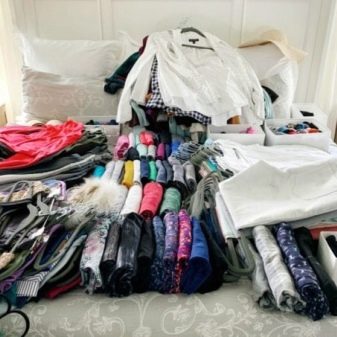
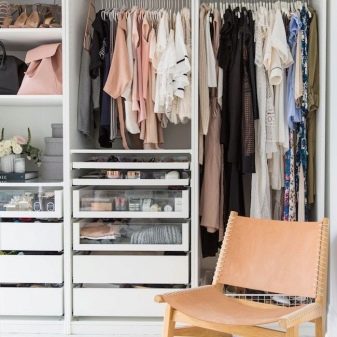
Things on hangers must be arranged according to a certain principle. One side of the closet is reserved for heavier and longer outfits. Also there are things made of darker fabric. The second side of the cabinet is reserved for lighter and lighter materials.
To store things on the shelves, Marie Kondo uses a special system. She recommends placing them in boxes not horizontally, but vertically. To cope with the task is quite simple. Each wardrobe item must be folded into a simple rectangle. After that, all things should be put on the edge, folding into a box. This way you can fold T-shirts, sweaters, jeans and regular pants.
Socks and tights should be rolled into neat cylinders, and then stacked upright in the box. By the same principle, you need to fold your panties. It is most convenient to store them in a drawer or transparent container. You can buy this in many stores. Since all of these items are used on a daily basis, containers should be kept on shelves at eye level.
Vertical storage of things allows you to free up a large amount of free space in the closet. In addition, in her book, Mari Kondo writes that in this way a person demonstrates his gratitude for things. This allows him to make his life more harmonious.
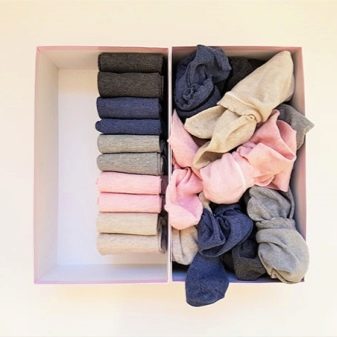
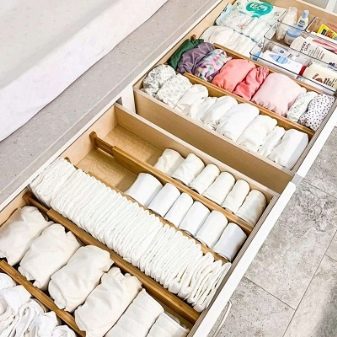
What to do with books?
Once you're done cleaning the closet, you can move on to other categories. If there are bookshelves in the house, they will also have to be taken apart. Marie Kondo divides all books into four conditional subcategories:
- art books;
- illustrated editions;
- non-fiction;
- magazines.
You need to clean the bookshelves according to the same principle as in other corners of the apartment. The most valuable books should be left behind. The Japanese woman advises keeping at home only your favorite publications or literature, which is used from time to time when looking for inspiration. If the book is not satisfied with the quality of the pages, the picture on the cover or the translation, you should get rid of it. You can always buy a new one later. The same should be done with books that no longer arouse any interest or have been on the shelf unread for too long. Unwanted literature can be sold or taken to your local library. Leftover editions are best stored upright on the shelves. This way they will take up less space.
In order not to clutter up the space with books that are not used, but only take up free space, the Japanese woman recommends buying an electronic reader. Now the right model can be found for people with any budget.
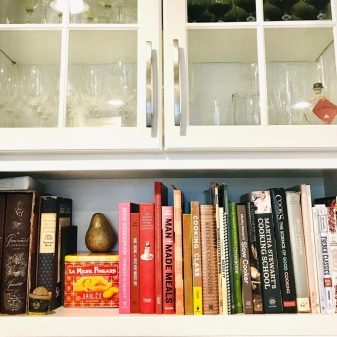
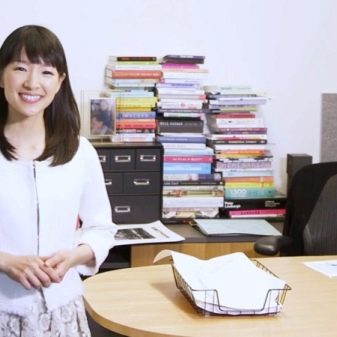
Sorting documents
Unlike books, throwing away documents is not so easy and quick. You need to devote 1-2 hours of free time to sorting them. The documents should be disassembled and their content checked. The remaining papers need to be divided into two main categories.
- The first includes those documents that are not used very often. This list includes insurance policies, various licenses and warranty coupons. Marie recommends putting them all in a transparent folder. In this case, you do not need to worry about their classification.
- The second category includes documents that are used on an ongoing basis. They must be kept in separate folders. A convenient option is to allocate one folder for storing documents for each family member.
Using this system, you can very quickly put your documents in order. All papers need to be folded on the upper shelves, away from children.
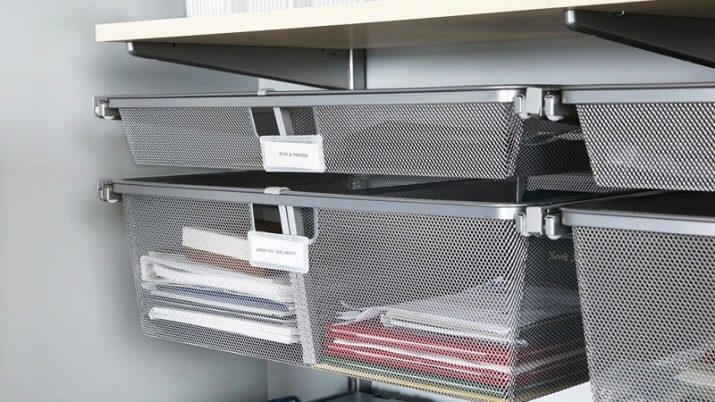
Other stages of cleaning
Having finished cleaning the main room, you can start getting rid of all unnecessary and cleaning the rest of the rooms.
Decluttering
The Mari Kondo cleaning system involves throwing away a lot of things. Therefore, you need to learn how to quickly and without unnecessary thoughts get rid of everything unnecessary. First of all, you need to get rid of pity for things. Marie Kondo claims that each of them comes to life with different goals. Some of them are in order to be worn down to holes, others - to simply bring joy to a person at the moment when they were received.
You need to leave at home only those things that bring pleasure to a person. The Japanese woman advises you to disassemble the rooms yourself. If a family member is watching this, there is a chance that half of the things will never leave the house. However, this technique does not force anyone to immediately throw things in the trash. Clothes and small items left over after decluttering can be sold, given to relatives or to help centers for people in difficult situations.
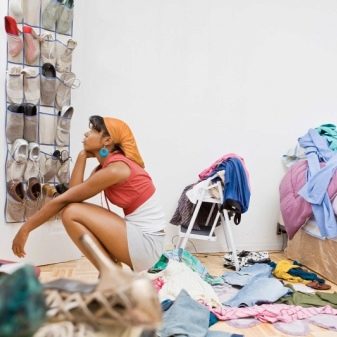
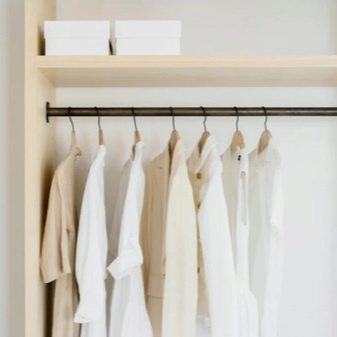
Parsing boxes with little things
When cleaning an apartment or house according to the Japanese system, special attention should be paid to the analysis of various sentimental trinkets. All of these things can be divided into several main categories.
- Postcards and children's crafts. In many homes, you can find stacks of postcards, children's drawings, and toddler's first handicrafts. Such things are very rarely thrown away, as there are many pleasant memories associated with them. Mari Kondo advises to get rid of them, saying that they perform their function exactly at the moment when they fall into the hands of the recipient. The purpose of cards and children's gifts is to give a person pleasant emotions.
- Souvenirs and unnecessary gifts. Very often, even close friends or relatives give things that are not used in everyday life and do not fit into the design of the apartment. The same applies to souvenirs that are bought in a fit of emotion or brought by someone close to you. You need to deal with them in the same way as with postcards. That is, to get rid of, leaving only pleasant memories. If desired, some of the gifts can be photographed as a keepsake.
- Photo. Marie Kondo advises getting rid of photographs that are stored on shelves or in stacks of various papers. Beautiful pictures can be sorted and assembled into albums, or inserted into frames. In this case, they will fulfill their function and remind about pleasant events or loved ones every day.
- Kids' things. Many mothers keep at home a large number of things that are too small for their children or simply not used by them. It is also not worth storing such little things. Better to give them to relatives who have babies, or sell them on any suitable site. With the money raised, it will be possible to buy toys or clothes that the child will use with great pleasure.
- Things for creativity. Even fans of minimalism should still have items on hand to help them relax and have a good time. But for your convenience, they should be stored in boxes or baskets with lids. The results of creativity are stored separately. They can also be used to decorate a room. A beautiful painting, embroidery or knitted toy will decorate the wall or shelves. You can use this decor in any room.
If you leave only the most beloved and valuable things in your home, they will not take up too much space.
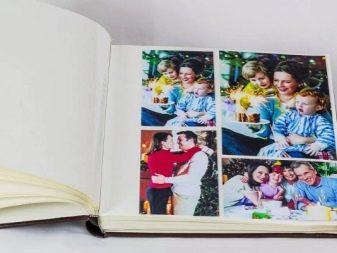

Kitchen
You should also start cleaning the kitchen by throwing away all that is superfluous. In the process, you need to pay attention to the following things:
- expired products;
- stocks of cereals;
- medicines stored in the refrigerator;
- old dishes;
- unnecessary kitchen gadgets;
- old decorative items.
You should remove things that duplicate each other. So, for example, if there are two identical salad bowls or graters in the house, one of them can be thrown away or given to someone who will use it.
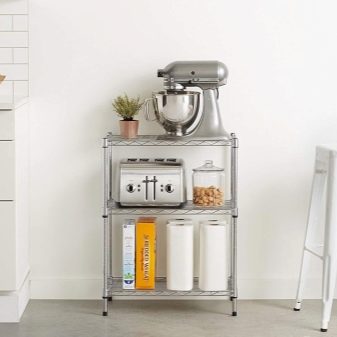
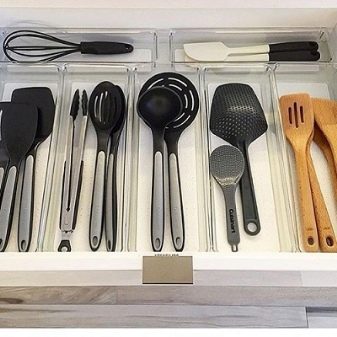
You also need to store the remaining things in the correct way. You need to use all the free space.
- Sink. The place around the sink and the work surface of the countertop next to it is not recommended for storing things. This will keep the headspace clean. Sponges and dishwashing detergents are best placed in the cupboard immediately after use.
- Drawers. To store cutlery and various kitchen items, you can buy a neat container or special plastic dividers.
- Shelves. It is recommended to store each group of items in one place. So, for example, for spices it is worth highlighting one shelf, for cereals - another. In this case, it will be much easier to navigate in the kitchen. In addition, cleaning in such a box will take much less free time.
- Fridge. The space inside the refrigerator must also be properly organized. Filling it, you need to leave at least 30% of free space. In this case, it will not be overloaded. In addition, there is always a place to store leftover food or drinks. As in the whole house, it is also worth whitewashing a separate area in the refrigerator for each category of food. So, fruits and vegetables need to be stored in a special box at the bottom of the refrigerator, dairy products and meat - on the shelves, and sauces and various drinks - in special compartments on the refrigerator door.
Using the free space correctly and knowing the basic principles of storage, you can organize a full-fledged pantry in the kitchen. While Marie Kondo advises getting rid of most of the decorative details, she is not talking about throwing everything away. A favorite tablecloth on the table and a shelf with beautiful jars for storing cereals will only raise the mood of the inhabitants of the house.


Bathroom
You can also use Japanese technology when cleaning the bathroom. Several basic categories of things are stored in this room.
- Care cosmetics. This category includes various shampoos, gels and scrubs. Tools that are used in everyday life can be put on the shelf. Everything else is best stored in convenient wicker baskets or plastic containers.
- Cleaning products. All household chemicals should be put in a separate box. There you can also store brushes, sponges and rags that are used to clean various surfaces.
- Decorative cosmetics. Placing it on shelves or next to a sink is not recommended. It is better to use a large handy cosmetic bag or a special plastic container for this.
- Detergents for washing. Products that are used for washing are usually stored next to the washing machine or bathtub. In this case, they are always at hand. In this case, it is very important that they stand out of the reach of children.
- A separate shelf should be allocated for towels. for all family members and guests.
When dealing with decluttering a bathroom, you should always pay attention to the expiration date of all products. Expired products should be thrown away immediately.


Advice
When planning an apartment cleaning, you should use the secrets that Marie Kondo shares in her book.
- Visualize the end result. In a cluttered room, it can be difficult to inspire yourself to clean. Therefore, in the process it is necessary to imagine how the room will look after the end of this process.
- Use one storage space for only one type of item. In this case, it will be much easier to maintain order in the house.
- You should not immediately take out all unnecessary things in the trash. Instead, it is advisable to look for other uses for them. Things that do not bring any pleasure to one person can be a real source of joy for another.
- No need to throw away other people's things. The only exception is the things of a small child. In other cases, you need to listen to the opinion of a person and not impose your new philosophy on him.
- If the house or apartment is large, it is worth cleaning the room in several stages. Usually a whole decluttering marathon is arranged for this. One day of the week is devoted to the analysis of each category of things. As a result, the apartment literally transforms in a week.
- You need to do the cleaning in a good mood. You can play your favorite music to create the right atmosphere.It will also speed up the process of parsing things.
- Buying new things after the clutter of the room should be approached more responsibly. You should only choose what will actually be used and enjoyed.
Cleaning with the Mari Kondo system is not just about de-cluttering a space. Using the advice of a Japanese woman, you can make your life more organized and harmonious.

